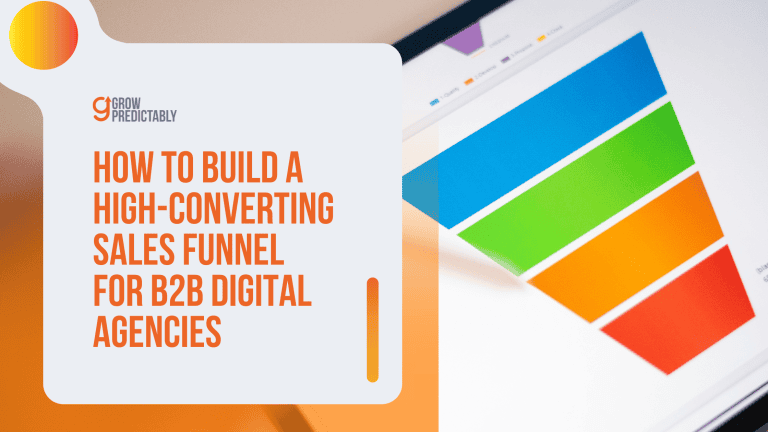Selling With A Story: 6 Ways to Captivate During Your Sales Process
In the hustle and bustle of modern life, capturing someone’s attention can feel like an uphill battle. But have you considered the power of storytelling?
A compelling narrative can grab people’s interest and forge a connection with your product or service. After all, who can resist a captivating story?
An engaging tale has the potential to evoke emotions, ignite thoughts, and even inspire action. So, if you’re eager to rise above the noise and leave a memorable mark, embracing the art of selling with a story is your ticket to success!
The Power of Storytelling in the Sales Process
The prowess of telling compelling sales stories is often deemed crucial for success in the sales journey. After all, who isn’t captivated by a well-woven narrative?
In the grasp of an accomplished storyteller, even the most straightforward message can evolve into a poignant and memorable tale. In marketing, selling with a good story reigns supreme in its persuasive power.
Stories are a key part of any kind of marketing, from social media posts to product descriptions. The best way to sell anything is to sell a story that resonates with the customer.
Stories hold the potential to connect with us emotionally, making them invaluable marketing instruments. We’re all enamored by a captivating story, and when employed aptly, such narratives can bolster a product or service promotion. After all, we tend to remember stories more than a compilation of facts.
Furthermore, stories narrate actual stories and events, shedding light on the human facet of a brand. When we learn about someone’s personal experience with a product, it fosters trust in the brand and entices us to give it a whirl.
Selling With A Story as a Sales Strategy
Every successful salesperson acknowledges that the cornerstone of a profitable sale is forming a personal bond with the customer. One of the most effective approaches to achieve this is by harnessing the magic of storytelling.
When used effectively, storytelling can be a powerful tool in the sales process.
Salespeople can attain a remarkable edge in the competitive business and sales arena by committing time to comprehend their customers’ needs and sculpting the most effective sales stories.
1. People Don’t Buy Products; they Buy Stories
It is pretty common for businesses to concentrate on their products’ attributes rather than the tales that accompany them. However, marketers understand that people are drawn to stories, not just products. This is the reason why leading brands have been able to establish emotional ties with their customers by selling through storytelling.
Each of us has a distinct personal narrative that influences our world perspective. When a brand’s story strikes a chord with our own experiences, we become much more inclined to develop loyalty toward that brand.
2. Stories Create an Emotional Connection
Undoubtedly, individuals are drawn to enthralling and unforgettable stories. Be it an account of victory against the odds, a touching comedy, or a gripping thriller, narratives captivate our attention and evoke our emotions.

Establishing such an emotional connection in marketing can be highly personal and immensely potent. After all, which is more memorable: a collection of data and statistics about a product or emotionally engaging sales tales that breathe life into the product?
When executed skillfully, sales narratives can make even the most ordinary products appear fascinating and appealing.
3. Sales stories Help People Remember You
Small business owners understand that providing an excellent product or service is insufficient. It is also crucial to differentiate oneself from competitors and leave a lasting impression on prospective customers.
When attempting to engage potential clients with a story about your business, your voice might get lost in the noise. However, imagine if there was a technique to ensure your message resonates.
“Nothing sticks in your head better than a story. Stories can express the most complicated ideas in the most digestible ways.”
Sam Balter
These narratives can range from personal accounts of your entrepreneurial journey to more cheerful anecdotes about unforgettable customer interactions.
Regardless of the approach, crafting an engaging story is a potent memory aid for prospective clients, helping them remember your brand when they purchase.
4. Stories Make Your Business Unique
Your business is like no other. It possesses a distinctive narrative, which can become its most valuable resource.
Each small business owner carries their legacy, encompassing triumphs, setbacks, and wisdom acquired throughout the journey. By crafting the most effective sales stories, you foster a more profound bond with them, nurturing loyalty via impactful sales narratives.
5. Stories Build Trust
Trust serves as the bedrock for fruitful connections. Without it, customers are unlikely to remain loyal for an extended period. So, what can you do to establish trust with your clientele? One approach involves sharing personal stories together.
Presenting a narrative and story inspired by your enterprise encourages customers to envision themselves within the story. Simultaneously, you demonstrate your comprehension of their needs and apprehensions, fostering meaningful and productive relationships.

Customers tend to engage more with businesses they feel connected to and comprehend. This is what makes storytelling in sales so crucial. It adds a human touch to your enterprise, enabling customers to form a deeper bond with your brand.
How to Identify Your Story’s Hook?
A hook constitutes the crucial aspect of your sales tales that seize your audience’s focus and holds their attention. It is responsible for crafting a captivating and memorable storyline, which in turn, encourages listeners to remain invested in your sales proposition.
1. Start with your audience in mind
Ask yourself who you aim to reach with your marketing narrative. Gaining a clear insight into your intended audience makes crafting a story that resonates with them more straightforward.
2. What problem does your product or service solve?
Center your marketing tale around the issue that your offering resolves. Incorporating challenges into a compelling and memorable narrative story is critical to making your sales narratives captivating for your audience.
Consumers are bombarded with marketing messages on a daily basis, it can be easy for your company’s sales pitch to fall on deaf ears. That’s why effective sales stories are so important.
3. What makes your product or service unique?
Identify the unique aspects of your offering that distinguish it from competitors. Emphasizing these elements in your marketing narrative helps your brand stand out.
4. What are the benefits of using your product or service?
Besides addressing a specific problem, your offering should provide users with additional advantages. These could range from time or cost savings to health or overall well-being enhancements.

How to Craft a Story that Sells?
The long-standing belief remains valid regarding sales presentations: the story is critical. A convincing sales tale can command attention, provoke emotions, and forge a relationship between the purchaser and the item. However, how can one concoct a sales narrative that genuinely results in sales?
Here are four essential elements of a successful sales story:
- A compelling protagonist.
Top-notch sales stories showcase a protagonist with whom the audience can effortlessly connect. Be it a person or an organization, the protagonist should be relatable, authentic, and empathetic.
- A clear problem.
A memorable story integrates obstacles. The problem must be something the audience can recognize and comprehend. It ought to be specific enough to demonstrate the need for the product, yet not overly detailed to deter potential clients.

- A solution that addresses the problem.
The solution must be customized to tackle the problem in question directly. It must be trustworthy and convincing, substantially influencing the protagonist’s life.
- A happy ending.
The finale should be fulfilling and instill a sense of positivity in the audience about the product. It must illustrate the advantages the protagonist has gained from using the development and the subsequent improvement in their life.
6 Tips to Captivate People With Your Sales Story
1. Know Your Audience
The initial step in incorporating storytelling into your business is identifying your target audience. What are their aspirations and requirements? What issues do they encounter? By recognizing your audience, you can develop and promote a story that resonates with them and caters to their demands.
2. Keep It Simple
Craft a story that is straightforward and understandable. Ensure it is lucid and concise, devoid of extraneous information. Keep in mind; the goal is for your audience to recall your story, facilitating their ability to achieve this.
3. Make It relatable
The narrative you create ought to resonate with your audience. They should envision themselves within the story and sense the potential to attain similar outcomes as the characters portrayed in your tale.
“There are 2 ways to share knowledge. You can push information or you can pull them in with a story.”
4. Use Emotion
Narrative methods that stir emotions tend to leave a lasting impression on your audience. Employ vivid expressions to create a mental image for your listeners, evoking feelings as they immerse themselves in your story.
5. Keep it Concise
As you sell through storytelling, remember that minimalism can be advantageous. Avoid lengthy narratives that drone on endlessly as they repel listeners.
Instead, deliver a crisp, to-the-point story that holds your audience’s attention from start to finish.
6. Be Authentic
Embrace a narrative that genuinely represents your business identity. Audiences can readily detect inauthentic or misleading tales, so focus on sharing stories that are credible and pertinent to your brand.
Avoid mimicking others’ narratives – convey YOUR story using YOUR unique voice.
How Do You Sell With Stories?
To boost your sales, begin incorporating stories into your strategy. Storytelling is among the most potent tools of persuasion at your fingertips. It can render your products and services more relatable, foster deeper connections with potential clients, and prompt them to act.
So, how can you integrate sales narratives into your selling approach? Consider these suggestions:

1. Use stories to introduce your products or services.
When introducing your products or services to prospects, use stories to give them a taste of what they can expect. Describe how your products or services have helped others in similar situations.
Sell with a story through customer testimonials and case studies. The goal is to make your prospects visualize how your products or services can benefit them.
2. Use stories to overcome objections.
Prospects will always have objections, no matter how good your products or services are. But you can overcome objections by sharing stories that address those specific concerns.
For example, if a prospect worries about price, share and sell with a story about how another customer saved money using your product.
If a prospect is worried about commitment, share a story about how another customer was able to try out your service before making a long-term commitment.
3. Use stories to close the deal.
When you’re ready to close the deal, don’t rely on logic and facts to seal the deal. Instead, sell with a story to drive home the value of your offer and motivate prospects to take action.
Share case studies of customers who have succeeded with your product or service. Sell with a story by describing the transformation they went through as a result of using your offer in your sales pitch.
And emphasize the unique benefits they received by working with you.
What Are the Benefits of Story Telling?
1. Helps to Foster a Deeper Connection with Customers
As you present your products or services to potential clients, use storytelling to glimpse the anticipated outcomes. Share instances of how your offerings have aided others in comparable circumstances.
Enhance your sales pitch with narratives from customer testimonials and case studies. Aim to help prospects envision the advantages they can gain from your products or services.
2. Makes Your Brand More Memorable
An engaging story can make your brand more unforgettable than a dull compilation of data and statistics. In the current cutthroat market, businesses must discover methods to distinguish themselves from competitors.
Utilizing storytelling creates an effective persuasive, simple sales pitch that can assist you in accomplishing this objective.

3. Builds Emotional Connections
Individuals tend to base their buying choices on emotions rather than rationality. As a result, businesses need to establish emotional bonds with their clients.
Harnessing storytelling in sales is an efficient method to achieve this, as it enables customers to engage emotionally with your brand.
4. Encourages Customer Engagement
Storytelling also offers the advantage of promoting customer involvement in your sales presentation. When clients actively engage with your brand, they’re more inclined to develop loyalty and become returning customers.
Additionally, engaged customers tend to share your narrative with others, potentially attracting new clientele.
5. Helps You Stand Out from the Competition
In the highly competitive realm of business today, it’s vital for organizations to discover techniques to differentiate themselves from others. Narrating stories about your brand can contribute a powerful and practical guide to reaching this aim.
By marketing your company through storytelling, you can set yourself apart from competitors and establish a more memorable brand.
Why Great Sales Stories Sell?
A fantastic story can captivate the audience and foster an emotional bond. Storytelling humanizes the sales approach and assists potential clients in understanding how your product or service can enhance their lives.
“People will remember your stories before they remember your sales pitch.”
Gennia Holder
Moreover, a compelling sales narrative delivers crucial details about your company, product, or service engagingly and memorably. As a result, an effective sales story can serve as a potent instrument for sealing agreements and expanding your enterprise.
FAQs
When you’re selling, you’re constantly fighting an uphill battle. You’re trying to get people to part with their hard-earned money, and that’s not easy. In order to be successful, you need to find a way to stand out from the crowd and connect with your potential customers on a deeper level. One of the best ways to do this is by selling with a story. Here are the top questions about this sales strategy.
To Conclude,
Storytelling in sales is an effective technique for businesses, as it stimulates emotions and allows individuals to grasp the value of a product or service.
When integrating narratives into your marketing, ensure they are applicable, engaging, and unforgettable. Emphasize the advantages of your product or service while maintaining brevity and precision in your story.
By narrating an appealing story that resonates with your customers instead of merely presenting a sales pitch, you’ll be on track to enhance your sales data and performance. Have you attempted narrative-based marketing in your endeavors? What outcomes did you experience?








